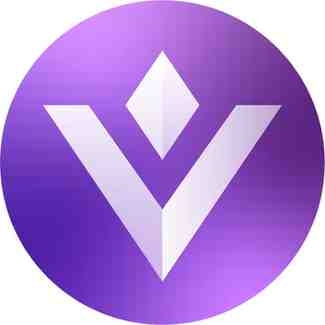How Much is Cardano Worth in Today's Market?

How Much is Cardano: Understanding Its Value in the Crypto Market
In the ever-evolving landscape of cryptocurrencies, few names garner as much attention as Cardano. Whether you're a seasoned trader or a newcomer, understanding the value of Cardano - a system that prides itself on being both ingenious and secure - is crucial. But how much is Cardano actually worth, and what influences its price in the competitive crypto market?
The Foundations of Cardano
Cardano, launched in 2017 by Charles Hoskinson, a co-founder of Ethereum, emerges as a third-generation blockchain. Its mission is audacious: to address the scalability, interoperability, and sustainability issues plaguing earlier cryptos like Bitcoin and Ethereum. Through its layered architecture, Cardano aims to balance the need for regulation with privacy and decentralization.
Technological Innovation
Cardano employs a unique proof-of-stake consensus mechanism called Ouroboros. Unlike the energy-intensive proof-of-work used by Bitcoin, Ouroboros is more environmentally sustainable and cost-effective. This innovative approach not only enhances Cardano's transactional capabilities but also positions it positively for future scalability.
The blockchain also introduces the concept of 'epochs' and 'slots' to structure its ledger, which ensures faster transaction processing while maintaining security. These technological advancements form a critical backbone for Cardano's value proposition.
Market Dynamics and Valuation
Cardano's market valuation is influenced by various elements, ranging from macroeconomic factors to industry-specific trends. Here are some primary drivers:
Supply and Demand
As with any tradable asset, Cardano's price is heavily dependent on its supply-demand curve. The total supply of ADA (Cardano's native token) is capped at 45 billion, creating an inherent scarcity that can drive up price when demand surges.
Additionally, increases in mainstream adoption and utility can boost demand. Institutions investing in ADA or countries incorporating it into their financial systems can significantly enhance its market cap.
Investor Sentiment
Cryptocurrency markets are notoriously volatile, with prices often swayed by investor sentiment. Positive news, partnerships, or regulatory developments can spur an inflow of capital to Cardano. Conversely, negative press or crypto market downturns can have the opposite effect.
Technological Upgrades
Cardano’s roadmap comprises several phases, each named after a prominent figure such as Byron, Shelley, Goguen, Basho, and Voltaire. As Cardano moves through each phase, new features like smart contract capabilities and enhanced governance tools are implemented. These developments tend to be pivotal events that can impact ADA's valuation.
Industry Competition
While Cardano stands as a formidable player, the cryptocurrency sphere hosts fierce competition. Ethereum, often cited as Cardano’s primary rival, boasts a more significant developer ecosystem and broader adoption. Yet, Cardano’s technological edges, such as lower fees and scalability, present strong counterpoints.
Future of Cardano: Is the Sky the Limit?
As regulations catch up with the rapid pace of crypto advancements, the blockchain industry is poised on the brink of mass adoption. Cardano, with its robust framework and partnerships, stands to significantly gain from this shift.
Smart Contracts and dApps
The Goguen era of Cardano, focusing on smart contracts, enables decentralized applications (dApps) to run on the blockchain, akin to Ethereum. This capability opens doors for extensive use cases in finance, supply chain, education, and healthcare.
Partnerships and Collaborations
Cardano has established strategic partnerships with academic institutions and governmental bodies worldwide. Collaborations with entities like the Ethiopian Ministry of Education indicate a potential expansion of blockchain technologies in national infrastructures. Such partnerships can create a ripple effect, enhancing Cardano’s credibility and adoption.
Navigating Investment in Cardano
For individuals contemplating investments in Cardano, it's imperative to exercise due diligence. While the prospect of high returns can be enticing, the volatile nature of cryptocurrencies warrants a thoughtful approach.
Investment Strategy
Investors should diversify their portfolios to mitigate risk. Whether considering Cardano for its technological prowess or as part of a broader crypto strategy, balance is key. Familiarize yourself with platforms like Bitget Exchange, which provide a reliable avenue for trading with the necessary security and tools.
Staying Informed
Keeping abreast of the latest developments in blockchain technology and Cardano’s own upgrades is essential. Engaging with crypto communities, attending webinars, and following credible financial news can assist you in making informed decisions.
Conclusion: Embracing the Cardano Revolution
Cardano represents a paradigm shift in the digital asset realm. Its value isn't just pegged to market speculations or immediate functionalities but tied to a broader vision of blockchain's potential in ushering in a secure and decentralized future. As you embark on your journey with Cardano, keep a sharp eye on the horizon of opportunities and the ever-unfolding landscape of digital finance.
Latest articles
See moreAbout author
As Lily Wong, I'm a bilingual navigator in the crypto space. I excel at discussing the technological breakthroughs of Bitcoin's Lightning Network and the risk control mechanisms of DeFi protocols in English, while interpreting the potential of Macau's virtual asset trading market and blockchain education initiatives in Malaysian Chinese communities in Traditional Chinese. Having assisted in building a cross-border supply chain blockchain platform in Kuala Lumpur, I'm now exploring the innovative integration of the metaverse and blockchain in Sydney. Through bilingual narratives, I invite you to discover the endless possibilities of blockchain technology across diverse cultural landscapes!























